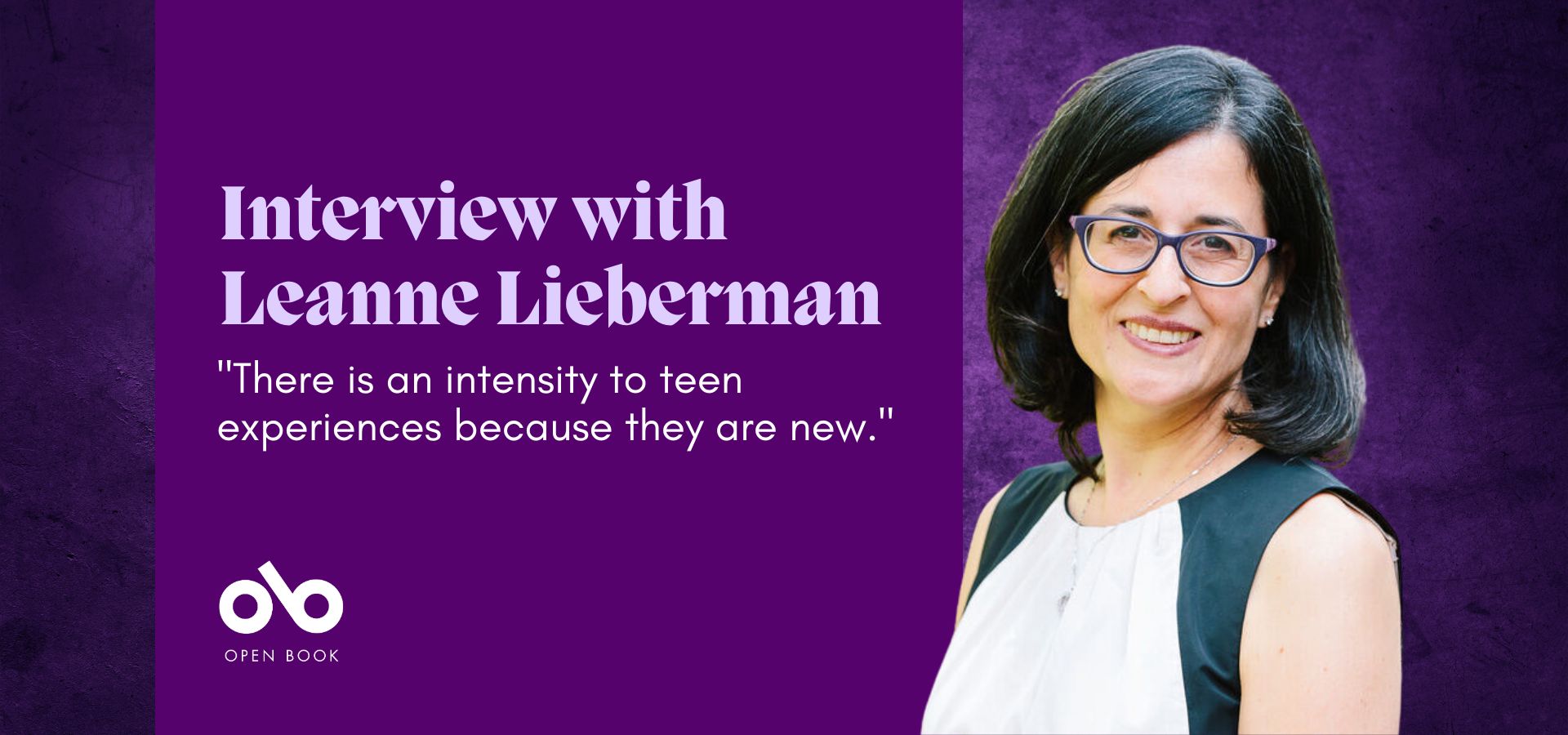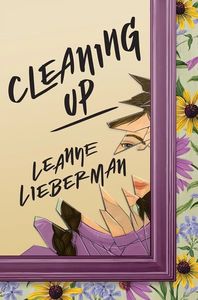"Conflict is the Engine that Drives Fiction" Leanne Lieberman on the Magic of Writing for Teens
When her dad hits rock bottom—again—Jess finds herself determined to change her stars and avoid going down the same dark path. She takes a job cleaning a beautiful country house, where part of her work includes tidying up after Quinn, a teenage girl she never sees and whose life couldn't be more different than her own.
Consumed with wondering what it would be like to have what Quinn has, Jess makes a fateful decision to read Quinn's diary when she stumbles across it. In the process though, she discovers that all is not right in Quinn's world, and soon Jess finds herself putting everything on the line for an imagined friendship that has come to dominate her inner life.
The star of Leanne Lieberman's new young adult novel, Cleaning Up (Groundwood Books), Jess is a YA heroine for the real world, navigating issues of class, privilege, familial addiction, and loneliness. She's a relatable and compelling character driven by longing and painful hope, and her story will keep readers guessing till the end.
We're speaking with Leanne today as part of our Bright Young Things interview series for young adult creators. She tells us what she loves about writing for teens, why setting the book in the Kingston, Ontario area was so special for her, and the YA books she wishes were around when she was a young reader.
Open Book:
What’s your new book about and how did it come to be?
Leanne Lieberman:
My new book is called Cleaning Up. It's about a girl, Jess, from an impoverished background who has a job cleaning a beautiful country home for the summer. When Jess discovers the trashed room of a teenage girl in the house she becomes curious about the girl, Quinn, and her room. Jess finds a diary tucked behind Quinn’s bed, but Quinn’s life isn’t as she imagines it. Instead Jess creates an imaginary friendship with Quinn that she ultimately takes it too far.
When I started writing this book I had an idea of one character reading the diary of another. As the characters grew in my mind, I realized they were from very different economic backgrounds. This reflected the reality of many of the schools where I have taught over the last twenty years. I hadn’t set out to write a book about the growing wealth inequality in Canada, but issues of class difference and privilege, and how they affect our identity became an important part of the story.
OB:
What is unique about writing for teens?
LL:
I love writing the immediacy of a teen voice. There is an intensity to teen experiences because they are new and I enjoy channeling that energy. YA is also often quick-paced and I like the challenge of creating and maintaining tension within a story. Also, teen characters usually have lots of natural conflicts because they lack agency due to their age. This creates endless opportunities for conflict, and conflict is the engine that drives fiction.
OB:
How did your book change through the writing process?
Your CanLit News
Subscribe to Open Book’s newsletter to get local book events, literary content, writing tips, and more in your inbox
LL:
Initially Cleaning Up had two time frames. The book began with a slightly older Jess looking back on her actions of the summer and worrying about what she had done. My editor, Shelley Tanaka, thought this lessened the impact of the story, so I removed the exterior shell. This really did help focus on the story and helped the reader become more engaged in the unfolding drama.
OB:
What was the most memorable experience about writing this book?
LL:
I loved writing a book set in Kingston, Ontario, my adopted hometown. My previous books are all set in larger cities where I have lived, but Kingston has been my home for fifteen years now, and I enjoyed writing about this area. I know as a reader there’s something special about reading a book set in a place you know. As I wrote Cleaning Up I enjoyed imagining local readers being able to envision driving down Front Road, or knowing what the wildflowers around Westport look like.
OB:
What is your favourite part of the life cycle of a book?
LL:
My favourite part of the life cycle of writing a book is definitely the early stages when the story comes rushing to me very quickly and I can hear the characters’ voices. I often have a short period where I am uncertain exactly what I am writing, but when I have a vision of my characters and their challenges, and I can see and hear them, that’s an exciting moment.
I also love when I can see the arc of the story and have a sense of the end I’m writing towards. I often envision my book as an empty clothesline that I need to fill. But instead of clothing, I see scenes clipped to the line. When I have that clothesline filled with paper, I know I have a first draft.
OB:
What YA book was meaningful to you as a teenager?
LL:
As a child I was a huge Judy Blume fan. She wrote about all the things that no one talked about. I loved Are you There God, It’s Me Margaret and Starring Sally J Friedman as Herself. But as a teenager I really struggled with what to read. This was in the 1990’s and I didn’t know how to find realistic books for teens that interested me. I read books for adults - some appropriate and others not - or didn’t read much at all. Then a friend introduced me to Chaim Potok and I read The Chosen and The Promise. I was fascinated by the ultra-orthodox world Potok wrote about. Still, I really wished Rainbow Rowell’s books had existed when I was a teen. I’m a big fan of Fangirl and the Simon Snow series.
OB:
What are you working on now?
LL:
I'm working on a YA book called The Refugee Girl. It’s set on an imaginary island that decides to completely isolate itself from the rest of the world following World War Two. The inhabitants, scarred by colonialism and violence, believe self-sufficiency and their own spiritual path are the way forward. However, when a refugee girl washes up on their shores, the island is thrown into chaos. The book tells the story of how the refugee girl navigates her new life on an island that isn’t sure it wants her as a citizen.
___________________________________________________
Leanne Lieberman is the author of five young adult novels, including The Most Dangerous Thing, Gravity (Sydney Taylor Notable), The Book of Trees and Lauren Yanofsky Hates the Holocaust (Sydney Taylor Notable and Bank Street Best Book). Her adult fiction has been published in New Quarterly, Descant, Fireweed, the Antigonish Review and Grain. She’s a schoolteacher in Kingston, Ontario.





